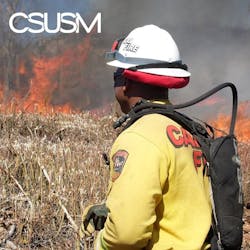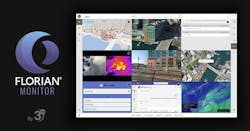Fire Chiefs: Building Relationships, Forging Partnerships
Product Spotlight
Fire Services Administration Degree
Idaho State University’s degrees enhance students’ knowledge base and prepare them for a new career and organizational leadership positions. All courses are taught online or via a web-delivered classroom. ISU’s Associate of Science and Bachelor of Science in fire services administration are among numerous programs that hold the Certificate of Recognition from the U.S. Fire Administration’s Fire and Emergency Services Higher Education initiative. ISU’s program is very affordable; students pay a flat program fee of $273 per credit.
B.S. in Wildfire Science
Ready to take your place at the forefront of the wildfire industry? California State University San Marcos’ online Bachelor of Science in wildfire science and the urban interface dives deep into wildfire behavior, prevention and suppression and prepares for leadership roles, such as fire chief and fire captain. Developed with the California Department of Forestry and Fire Protection, the program’s curriculum, which is fully online and completable in five semesters, focuses on environmental impact, risk mitigation, emergency management, and firefighter health and safety, to ensure that students receive a comprehensive,
industry-relevant education.
Critical-Information Delivery
Monitor from 3AM Innovations puts the power of an emergency operations center in the hands of incident commanders on a single screen, to access all of the critical information points that are needed to direct teams and deploy resources. Its interface is designed to display tiles that contain both preset and real-time information. Users have the flexibility to integrate any predetermined URL into the tiles. Additionally, the tiles can be populated with information from a suite of integrated apps, including 3D mapping, satellite mapping, weather tracking, drone feeds, note-taking, instant messaging and news feeds.
About the Author

Jared Renshaw
Jared Renshaw has more than 20 years of experience in the fire service. He started his fire service career with the Fairview Volunteer Fire Department in South Fayette Township, PA. Renshaw also served with career departments in South Carolina and California and since 2015 has served as the fire commissioner with the Western Berks Fire Department in Berks County, PA. He holds a bachelor's degree in fire service administration and is designated as a Chief Fire Officer through the Center for Public Safety Excellence (CPSE). Renshaw served as a member of the board of directors for the Pennsylvania Fire and Emergency Services Institute. He is a member of the advisory boards for Firehouse and FireFusion.




